Not all protein powders are made equal.
Some are obviously better than others.
However, with hundreds, if not thousands, of options available, it can be difficult to determine which protein powder is best for you (or your clients).
After all, each individual has distinct goals, physiology, and tastes. So there is no single protein powder that is ideal for everyone.
There may, however, be the best protein powder for you.
And we can help you find it.
In this comprehensive guide to protein powder, you will learn:
- Why is protein so important?
- When it makes sense to incorporate protein powder into your diet.
- What to Look for in Protein Powder.
- How to Choose the Right Protein Powder for You (or Help Your Client Choose What's Best for Them)
How much protein do I need?
Before you can choose the best protein powder for you (or your customer), you should first understand why protein is so important.
The main reason for using protein powder is to help you meet your protein goals.
Not eating enough protein can cause you to:
- Lose muscle mass (which can cause a reduction in metabolism).
- Have skin, hair, and nail problems.
- If you have cuts or bruises, they will heal more slowly.
- Symptoms include mood swings and an increased risk of bone fractures.
- To be clear, most people aren't concerned about this.
Most people who consume the standard Western diet are not protein deficient.
The absolute minimum protein needed is thought to be 0.8 grams per kilogram (kg) of body weight, or 0.36 grams per pound. To prevent protein insufficiency, a 160-pound person should consume at least 58 grams of protein.
For reference, a palm of protein has approximately 20 to 30 grams of protein. So with 2 to 3 palms of protein per day—such as chicken breast, tofu, Greek yogurt, or legumes—you'd be OK.
However, eating the bare minimum of protein differs from eating the ideal quantity of protein.
Most active persons can get their ideal protein intake by consuming 1 to 2 palms of protein with each meal.
Unless you have a medical reason to limit your protein intake, most people will benefit from eating more protein.
Why? There are numerous explanations, including:
- Appetite control: A high-protein diet appears to increase satiety.
- Weight and body composition management: Higher protein intakes may help people eat less when trying to lose fat, improve the number of calories lost via digestion (thermic effect of food), and maintain muscle mass while losing fat.3
- Muscle growth or maintenance: Maintaining adequate protein levels, paired with exercise, helps people gain and retain important muscle mass throughout time, particularly as they age.
- Better strength: Combining higher protein intake with exercise can help you increase strength.
- Improved immune function: Proteins are the building blocks of antibodies and provide a variety of immunological-related tasks. Protein deficiency makes people more susceptible to viral and bacterial illnesses.
- Quicker workout recovery: Higher protein consumption aids in the healing of tissue damage caused by exercise and injury.
Protein derived from entire meals is best.
Why is protein from whole foods superior? It's primarily because it is bundled with other nutrients, such as vitamins, minerals, phytochemicals, zoo nutrients, and so on, depending on the source.
No supplement will be able to exactly replicate those combinations or their synergistic effects. When foods are processed to make protein powder, some nutrients are removed while others are placed back in, which can be advantageous or detrimental depending on the situation.
Of course, protein powder digests more quickly than whole foods. This would be beneficial if you were seeking to fast replenish your muscles with protein following an exercise.
This strategy, known as nutritional timing—or taking specific nutrients at strategic times—was popular in the early 2000s. However, as research progressed, the benefits of drinking a protein shake right after a workout became less crucial than we previously imagined.
When should I take my protein shakes?
For the majority of people, the following is most important: The quantity of protein you consume on a steady basis throughout the day, rather than when you eat it.
That is not to suggest that nutrient timing is completely incorrect. There is clear evidence that protein (and carbohydrate) timing is important in some conditions.
However, unless you're an expert athlete or are chasing significant fat reduction or muscle gain, you shouldn't be too concerned about when you get your protein. Read: Drink a protein shake when it makes the most sense in your daily routine. For example, you don't have time for a proper breakfast, it will be several hours before your next meal, or it is simply the most convenient moment.
Why would you use protein powder?
While whole-food protein is preferred, it is not always possible to obtain all of your protein requirements from whole foods. Finally, there are two major reasons you would wish to incorporate protein powder into your diet.
Reason #1: Convenience: In certain circumstances, folks just do not have the time (or want) to sit down and eat a whole-food meal. This may happen when a person is:
- Busy with job, caregiving, or other commitments.
- Aiming for a very high protein need and does not have the time/desire to eat that much whole-food protein
- Transitioning to a plant-based diet and are still figuring out their preferred whole-food protein sources
- Trying to reach your protein targets while traveling or with limited dietary options
Reason #2: Appetite: Sometimes people aren't hungry enough to consume the amount of protein they require. This may occur when a person is:
- Trying to gain weight yet difficult to boost their consumption.
- If you are sick and have lost the desire to eat, or if you want to increase your athletic performance and recovery, but don't feel hungry, you may not be getting enough nutrients.
All of these arguments are entirely legitimate.
However, you don't need protein powder to be healthy. It is a supplement, not a necessary food category.
How much protein powder is excessive?
If you decide to take protein powder, 20-40 grams of protein per day (typically 1-2 scoops) is a good quantity. For most people, 80 grams per day (about 3-4 scoops) is a suitable maximum limit for supplemental protein consumption.
This is not an absolute law, but rather a general suggestion.
The major reason: Getting more than 80 grams of protein powder is excessive for most individuals since it replaces whole food sources that contain vitamins, minerals, and other elements.
There are certain exceptions, such as persons who are struggling to acquire weight.
How to Choose a Protein Powder.
If you've concluded that protein powder is ideal for you (or your client), here are some things to keep in mind as you weigh your alternatives and choose the best one.
Question #1: What form of protein works best for you?
This is mostly a personal preference.
Aside from ethical considerations, such as whether you prefer plant or animal sources, you should consider food intolerances and sensitivities.
Factor #1: Protein quality.
Many people place a great value on the quality of their protein supply. When it comes to evaluating quality, there is a lot of discussion about complete versus incomplete proteins.
Proteins are composed of amino acids, which resemble various colored Legos. They can be combined in many ways to serve diverse functions in the body.
In total, your body uses 20 distinct amino acids.
Seven of the amino acids are non-essential. That's because your body can produce them on its own.
There are additional four conditionally necessary amino acids, which the body can produce but not always. For example, your body may have a tougher difficulty producing enough of them while you're unwell or after strenuous exercise.
The remaining nine amino acids are known as essential amino acids (EAA). Your body cannot produce them, thus you must obtain them from food.
This is significant because EAAs are involved in the formation and repair of tissue, such as muscle, as well as the production of hormones, enzymes, and neurotransmitters.
Branched-chain amino acids (BCAAs), a kind of EAA, are particularly significant because they aid in muscle protein synthesis.
Muscle protein synthesis is the process by which your body repairs and builds muscle following exercise. While muscle protein synthesis is far more involved than just one amino acid, leucine plays an important role in initiating the process, making it the most well-known BCAA.
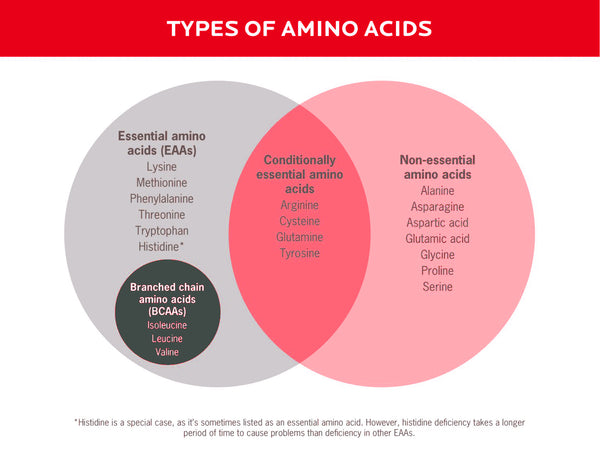
A complete protein includes an adequate amount of all nine EAAs. Incomplete proteins are deficient in one or more EAAs.
This is why we take the time to explain everything. People worry that if they choose plant-based protein sources, they will not obtain enough EAAs.
That's because many plant proteins are deficient in or missing particular amino acids.
For example, pea protein has less EAA methionine. However, you can still satisfy your total protein requirements if you consume a mix of other plant protein sources throughout the day. Tofu, brazil nuts, and white beans are all excellent sources of methionine.
Also, some plant-based proteins, such as soy protein and a pea/rice combination, provide a complete EAA profile.
Let us take a closer look: Protein digestibility
Beyond complete and incomplete proteins, scientists use a variety of alternative ways to evaluate protein quality.
The key factors scientists consider are digestibility and bioavailability, or how efficiently your body can use a specific form of protein. This can vary based on a protein's amino acid composition, among other variables.
The Protein Digestibility Corrected Amino Acid Score (PDCAAS) indicates how much of a given protein is genuinely digested. The maximum potential score is 1.0. The higher the score, the better the quality of the protein.
Some people prefer another scale, which may provide a more true depiction of bioavailability: The Digestible Indispensable Amino Acids Score (DIAAS). As with the PDCAAS, the higher the score, the higher the quality of the protein.8
Here's how various common protein powders stack up using these scales:
| Protein Type | PDCAAS | DIAAS |
| Whey protein isolate | 1.00 | 1.09 |
| Whey protein concentrate | 1.00 | 0.983 |
| Milk protein concentrate | 1.00 | 1.18 |
| Micellar casein | 1.00 | 1.46 |
| Egg white protein | 1.00 | 1.13 |
| Hydrolyzed collagen & beef protein isolate | 0.00 | 0.00 |
| Bone broth protein | 0.00 | 0.00 |
| Soy protein concentrate | 0.99 | 0.92 |
| Soy protein isolate | 0.98 | 0.90 |
| Pea protein concentrate | 0.89 | 0.82 |
| Rice protein concentrate | 0.37 | 0.42 |
| Hemp protein | 0.63 | N/A |
| Rice/pea blend | 1.00 | N/A |
*DIAAS is a recent measure of protein quality, hence some values are unclear.
*A 70:30 combination of pea and rice protein roughly matches whey protein, however, the percentages vary by manufacturer.
As you can see, animal proteins (with the exception of collagen and bone broth protein) tend to perform better than plant proteins.
Similar to picking protein from incomplete protein sources, just because a protein powder lacks a PDCAAS of 1.0 or has a lower DIAAS does not indicate it is a bad choice. It can still be advantageous if you consume a variety of protein sources throughout the day.
Factor #2: Plant-based versus animal protein.
Animal protein possibilities are classified into two types: milk-based and other animal protein sources.
Milk-based protein powders.
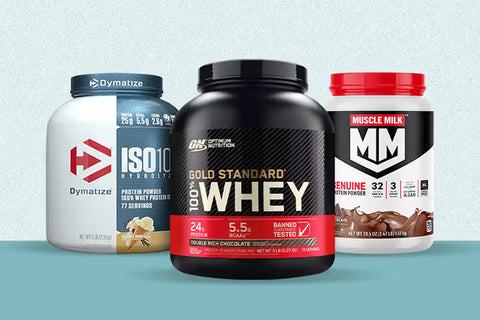
The most popular and well-studied protein supplements contain milk. All of them are full protein sources.
Whey is commonly used in post-workout smoothies because it is a high-quality protein that digests quickly and contains a lot of BCAAs. Whey protein is often used in concentrate, isolate, and hydrolyzed formulations.
Casein:
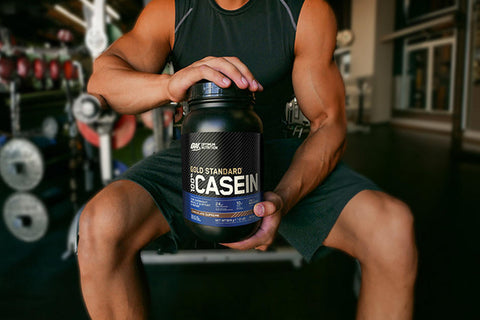
Casein is frequently cited as the best type of protein powder to consume before bed because it digests more slowly. It comes in two main forms: micellar casein (an isolate) and hydrolyzed casein. Hydrolyzed casein is more processed and, theoretically, digests faster, which negates the objective of choosing a slow-digesting protein.
Milk protein blends often combine whey and casein and are advertised as the "best of both worlds." The reason is that they contain both fast and slow digesting protein.
They are usually labeled as milk protein concentrate or isolate. You could also find them listed separately, such whey protein isolate and micellar casein.
Some brands sell a combination of concentrate and isolate of the same protein. For example, you might see both whey concentrate and whey isolate on the ingredient list.
While this may be presented as a benefit, it is primarily a cost-cutting tactic by the manufacturer. (Whey isolate is more expensive to make than concentrate.) There is no evidence to support the assertion that this formulation delivers a benefit.
If you are picking between casein and whey: Choose your favorite or create a combination.
Both have been thoroughly researched, indicating that they are trustworthy options. Again, the most important factor is your overall protein intake throughout the day. For the majority of persons, variations in digestion or absorption rates are unlikely to be significant.
Of course, if you are sensitive to dairy, these will not be suitable solutions for you. If you are sensitive or intolerant to specific dairy products, you may be able to tolerate whey but not casein, or vice versa.
Other Animal Protein Powders
There are numerous varieties of animal-derived protein powder available for persons who are unable or prefer not to consume dairy.
Egg white protein is frequently a suitable choice for those seeking an ovo-vegetarian (milk-free) source of complete protein.
Collagen is currently popular as a skin, joint, bone, and gut health supplement. Collagen peptides, the most common type of collagen in supplements, are often extracted from cow hide or fish. Some people use it to increase their protein consumption, and there are even collagen powders advertised expressly as protein supplements.
This is somewhat odd, given that collagen was deemed a "junk" protein until the early 2010s. This is due, in part, to the fact that collagen does not contain full protein. It has also not been extensively tested as a protein supplement.
Collagen may provide some benefits. When combined with vitamin C, type II collagen may help to improve joint health. However, as a protein source, it is not ideal. The quality varies, and there are concerns regarding heavy metal pollution. As a result, it is extremely crucial to seek out third-party-tested choices.
Meat-based powders are commonly made from beef, however they typically contain an amino acid profile comparable to collagen. That means they're typically incomplete, low-quality proteins. On the other hand, other studies have found that beef protein isolate is just as effective as whey protein powders for increasing lean body mass. However, further research is required.
Bone broth protein is created by heating bones, tendons, and ligaments under high pressure to form a broth. Then it is condensed into a powder. Collagen contributes a significant amount of protein to bone broth. So, like collagen peptides, it isn't a full protein supply.
If you are allergic to common allergens such as dairy and soy, bone broth powder can help you increase your protein intake, but it is not recommended for use as a protein powder. This is especially true given the high cost of bone broth protein and the lack of research on its effectiveness as a protein supplement.
Plant-Based Protein Powders
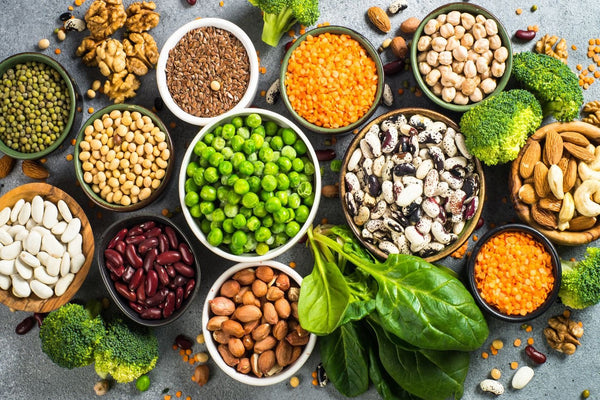
Not all plant proteins are complete. We'll go over which ones are complete and which are incomplete for your convenience, but just remember that as long as you consume a balanced diet with a variety of protein sources, you'll get all of the amino acids you require.
Rice protein:
Rice protein is also an excellent hypoallergenic protein that is reasonably priced. It lacks the amino acid lysine, making it an incomplete protein supply.
Pea protein:
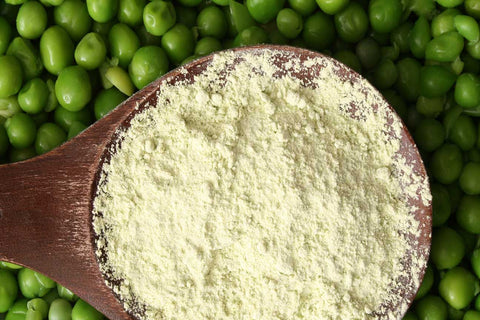
Pea protein is easily digested, hypoallergenic, and usually affordable. It contains the amino acids lysine, arginine, and glutamine. However, as previously stated, it lacks EAA methionine and hence is not a complete protein.
Hemp protein:
Hemp protein powder is manufactured by grinding hemp seeds, which makes it an excellent whole-food option. As a result, it is abundant in fiber and contains omega-3 fatty acids. However, hemp, like rice protein, is low in lysine, making it an incomplete protein.
Soy protein:
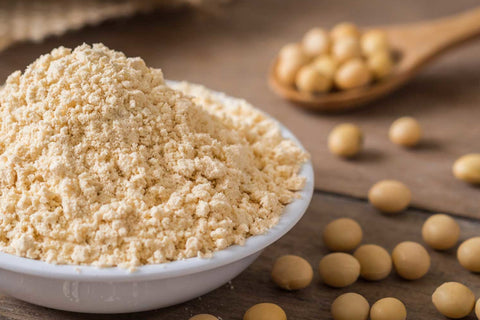
Soy protein promotes muscle building and is a complete protein. In fact, studies demonstrate that soy protein supplementation causes equivalent improvements in strength and lean body mass as whey protein in response to resistance training.
It has also been the source of much debate, particularly regarding hormonal health. However, the body of data indicates that soy meals and isoflavone (bioactive chemicals present in soy) supplements have no influence on testosterone levels in men.
Soy consumption does not increase the risk of breast cancer in women, according to research. And, while more research is needed in this area, soy does not appear to be hazardous to thyroid health.
Soy is a rather common allergen, so this may potentially influence your decision.
Blends are popular in plant-based protein powders. They're frequently employed to build a more robust amino acid profile, as different protein sources include varying amounts of each amino acid. For example, rice and pea protein are regularly mixed.
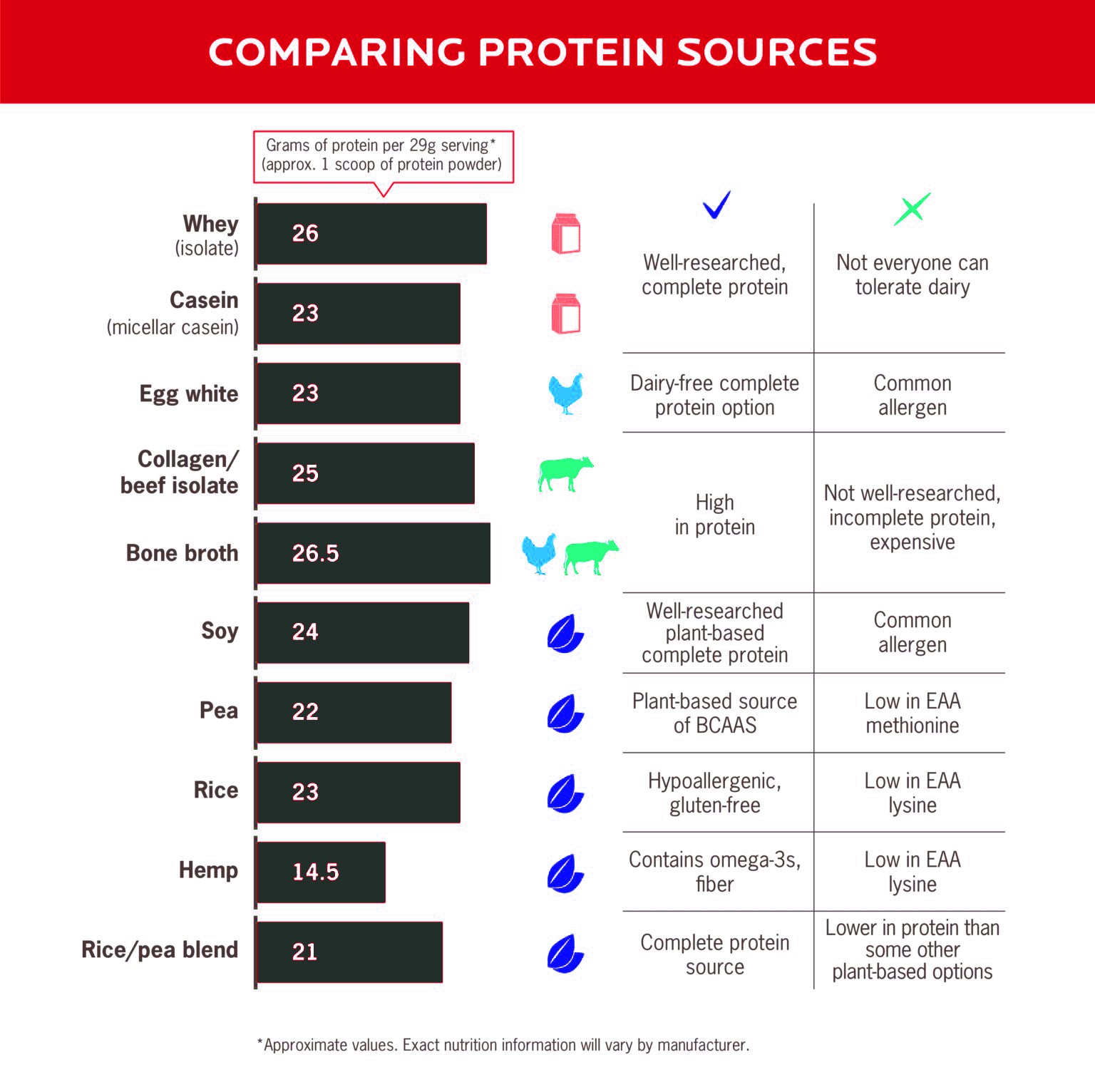
Factor #3: Processing Method and Quality
Protein powders are produced using various processing processes and come in a variety of forms, including concentrates, isolates, and hydrolysates.
Let us take a closer look at each processing method.
Concentrates: Protein is extracted from animal or plant-based sources using high temperatures, acids, or enzymes. Concentrates are the least processed and can include 35-80% protein by weight. Protein percentages ranging from 70 to 80 percent are most prevalent.
The remaining proportion is made up of carbs and lipids. So, if you don't mind getting some extra calories from non-protein sources, protein concentrate may be a decent choice for you.
Isolates: Protein isolates go through an additional filtration procedure that removes fat and carbs, leaving 90 percent or more protein by weight. This makes them slightly faster to digest, but there is no evidence that this improves recovery, muscular growth, or fat loss.
Because isolates often include fewer fat and carbohydrates than concentrates, they may be a little better choice for those who are careful about their fat or carb intake, or who are ready to spend more for a potential added benefit, even if it is not proven.
Whey, casein, and milk protein isolates may also be slightly healthier for persons who are lactose intolerant, as greater processing removes a lot of lactose.
Protein hydrolysates: This product is created by further digesting protein with heat, enzymes, or acid, resulting in shorter peptides.
The theory is that the extra processing and shorter chains make protein hydrolysates easier to digest and absorb. As a result, they are typically promoted to persons looking to grow muscle and who consume protein shakes in conjunction with their workouts.
While this procedure makes theoretical sense, there is insufficient evidence to conclude that hydrolysates are superior to isolates for this purpose.
Whereas hydrolysates are virtually pre-digested as a result of their processing—they contain even less lactose—they may be easier on the GI tract for some people.
However, there are several drawbacks to hydrolysates. First, they have a bitter flavor that takes a substantial amount of sweetener and/or sugar to conceal.
Second, whey protein concentrates and "non-ionized" isolates include bioactive micro fractions that may aid digestion, mood, and immunological function. These bioactive micro fractions are not found in whey hydrolysates or "ionized isolates". (Casein appears to contain some of these bioactive micro fractions as well, but has received less attention in this area.)
Price may also be a disadvantage of hydrolysates, depending on your budget. Protein powders are typically more expensive as they are prepared.
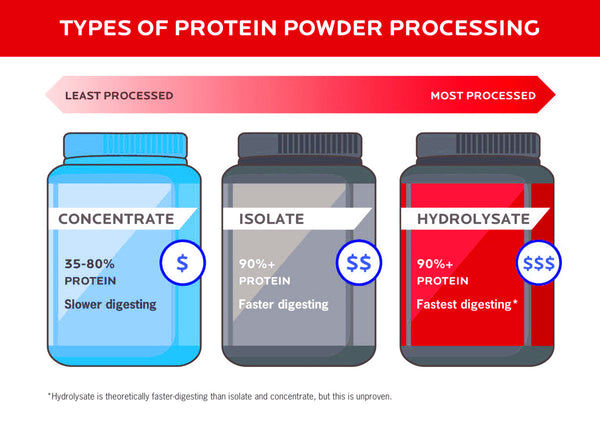
Factor #4: Intolerances and Sensitivity
If you have a known dietary intolerance or sensitivity, you should avoid protein powders with those ingredients. If you are allergic to eggs or dairy, you would most likely benefit from a plant-based protein powder.
If you have digestive concerns, more processed choices, such as isolates and hydrolysates, are typically easier on the stomach.
It's also not uncommon to have digestive issues after trying a new protein powder. This could occur for a multitude of reasons. Use the checklist below to get to the bottom of things.
- Ingredients: The protein powder you've chosen may contain allergens or be produced in an unsuitable manner for you. As a result, it's a good idea to read the ingredient label (as explained below). You may need to try a few different protein powders before finding the one that works best for you.
- Overall diet: Your body's reaction to a protein powder may be influenced by other foods you've consumed that day. For example, many people can take a certain amount of lactose, but once they reach their limit, they have symptoms. If your protein powder contains lactose, it may be putting you over the limit.
- Amount: It could also be a matter of quantity. Men are occasionally instructed to use two scoops of protein powder rather than one. For some people, this may be too much at once for their digestive system to manage properly. Others would make 1500-calorie shakes in an attempt to gain weight. Most individuals would have difficulty digesting that. So it may be beneficial to explore with smaller doses.
- Speed: Drinking too quickly can lead you to swallow too much air, which can upset your stomach. And if you drink a smoothie with a variety of ingredients, your digestive tract requires time to metabolize them. Slow down; you may find it simpler to digest.
Question #2: What other substances are there in the protein powder?
Protein powders contain sugars, flavorings, and thickeners in varying amounts.
There are few exceptions, but in general, you should opt for protein powders that have fewer chemicals. However, advice such as "look for foods with fewer than five ingredients" may not be applicable to protein powders.
Here's an overview of the most popular protein powder ingredients, as well as how to understand them.
Protein:
Because items are listed in weight order, the protein source should appear first. It usually includes the protein source's name (milk, whey, casein, soy, hemp) as well as the processing method (concentrate, isolate, hydrolysate). For whole-food protein powders, you may find something like "hemp seed powder."
Sweeteners:
Flavored protein powders will contain some kind of sweetness. Most frequently, you'll see:
- Nutritive sweeteners include honey, maple syrup, brown rice syrup, coconut sugar, cane sugar, molasses, and agave. The sugar level of a product will immediately reveal whether it contains nutritive or "natural" sweeteners. Ideally, use a protein powder with no more than 5 grams of sugar per serving.
- Non-nutritive/high-intensity sweeteners include sucralose, aspartame, saccharin, and acesulfame potassium. These are the same sweeteners found in diet soda, so you can't tell if a protein powder contains them by glancing at the sugar content; instead, check the ingredient label.
- According to the FDA, stevia and monk fruit extract are non-nutritive sweeteners, despite being branded and sold as "natural" sweeteners. This can be confusing for consumers because supplement providers may advertise that their goods contain "no artificial sweeteners," but they actually contain monk fruit extract or stevia. Because the FDA does not regulate this term, it is critical to review the ingredients list if you want to avoid any non-nutritive sweeteners.
- Sugar alcohols include sorbitol, maltitol, and erythritol. These are another non-caloric option made composed of sugar and alcohol molecules—but not the type that produces intoxication. Sugar alcohols serve as dietary fiber in the body, therefore persons who are sensitive to FODMAPs may experience digestive distress.
- Refined sugars, such as sucrose and high fructose corn syrup, are less common in protein powders. However, if you're managing your refined sugar intake, you should examine the ingredients list to determine if they're included.
Flavoring:
Flavored protein powders will also contain flavoring compounds, which are often specified as separate components. They are typically labeled as flavors, fake flavors, or natural flavors.
Artificial tastes are typically considered safe when ingested at the recommended quantities, such as the little amounts found in protein powders.
The only exception is if you have an allergy to a particular substance. If a natural flavor contains one or more of the eight most common food allergies, it must be disclosed in the ingredients. However, if you have an allergy that is not one of the eight major allergens, it is crucial to understand that it is not required to be disclosed on the label.
Thickening Agents:
Protein powders frequently contain ingredients that offer bulk for a thicker protein smoothie. These typically comprise psyllium husk, dextrins, xanthan gum/guar gum, and inulin.
These are safe in modest amounts, so while some individuals prefer protein powders without them, seeing thickening agents on the ingredient list should not cause alarm.
Emulsifiers and anti-clumping agents:
Whole food protein powders tend to clump more, making them less suitable for mixing by hand. This is generally due to a lack of anti-clumping chemicals and emulsifiers (which produce a creamy mouthfeel), such as carrageenan, lecithins, carboxymethylcellulose, and silicon dioxide.
Like thickening agents, tiny doses of these chemicals have been proved to be safe.
Vegetable oils may also be added to achieve a creamier texture. They are harmless as long as they do not contain hydrogenated or partially hydrogenated oils (trans fats). You should avoid trans fats as much as possible because they can have negative health consequences such as increased low-density lipoprotein (LDL) cholesterol and decreased high-density lipoprotein (HDL) cholesterol.
Certain thickeners and anti-clumping additives also function as preservatives, allowing protein powders to remain shelf-stable.
Additional Supplements:
Some protein powders contain additional supplements such as creatine, BCAAs, omega-3 and 6 fatty acids, digestive enzymes, and probiotics.
Marketers frequently highlight these as value-adds. However, we don't know how effectively these nutrients perform when combined with protein powder.
Furthermore, manufacturers frequently offer these supplementary vitamins in insufficient quantities. As a result, it is often preferable to seek for an additional supplement rather than relying solely on protein powder.
For example, if you wish to test creatine, take it as a separate supplement. (Although they might be consumed in the same shake.)
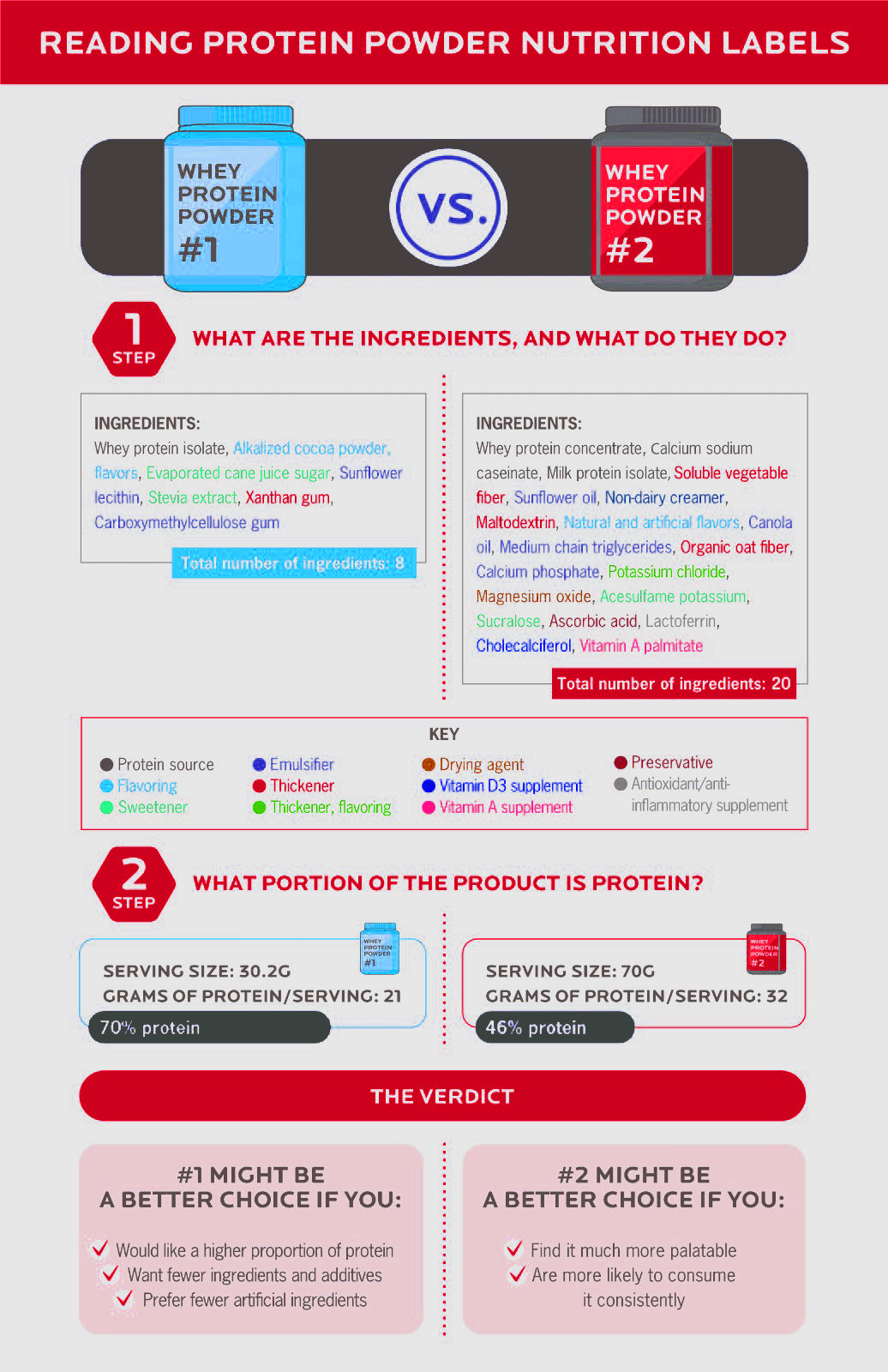
Purity and quality: How to determine if a protein powder is "clean" and safe
Heavy metal contamination has been discovered in several protein powders during laboratory tests. With this knowledge, it's reasonable to ask if protein powders are safe.
Depending on your location, supplements may or may not be a regulated sector. It is critical to understand the supplement rules in your nation or area.
While rules are far more severe in Canada and Europe, the Food and Drug Administration (FDA) in the United States does not evaluate nutritional supplements for efficacy, safety, or purity.
This implies that what appears on the ingredient label may not correspond to what is really in the supplement.
Most supplement firms do not offer counterfeit supplements on purpose (but it does happen). The biggest danger is that supplements may be tainted with other substances such as heavy metals (such as lead) or toxic compounds, and in many situations, no one will know—not even the corporations who manufacture them.
Competing athletes should also be aware of what is in their supplements, particularly protein powder, in case a forbidden chemical is present. No protein supplement is worth being disqualified after months of training.
Because of the various degrees of regulation, it's best to use third-party tested supplements whenever possible—especially if you reside in an area where pre-market testing is less prevalent.
NSF International's Certified for Sport program provides the most extensive third-party certification/testing of sports nutrition supplements. In fact, at PN, we urge our coaches and clients—including non-athletes—to purchase NSF-certified supplements due to their rigorous standards.
USP is a renowned third-party tester.
Another firm, LGC Group, operates an independent drug monitoring laboratory that conducts doping control and prohibited substance testing for supplements through the Informed-Sport and Informed-Choice programs.
Products that have been evaluated by these organizations frequently make this obvious on their websites and, in many cases, on the product packaging. These organizations also offer databases with authorized supplements to pick from.
It is vital to know that third-party-tested protein powders may be more costly. Part of this is due to the high cost of the testing process. At the same time, investing in third-party testing demonstrates a supplement company's commitment to preserving its consumers' health and reputation.
While it is better to choose a validated supplement, if third-party tested solutions are out of your budget, you can visit ConsumerLab or LabDoor. These websites are dedicated to assessing the purity and label claims for a wide range of nutritional supplements on the market today.
Other Ingredient Concerns:
Protein powders, like other meals and supplements, are frequently advertised using buzzwords such as "organic" and "grass-fed." When selecting a protein supplement, it's critical to understand what these labels actually represent so you can decide whether or not they're relevant to you.
People frequently choose organic products over non-organic alternatives due to worries about pesticides, hormones, antibiotics, genetic engineering, and artificial fertilizers.
According to the most recent studies, eating organic foods may provide health advantages. However, it is still too early to say if organic food is safer or more nutritious than conventional food.
So, ultimately, whether you pick organic is a question of personal choice.
If you choose an organic protein powder, search for the official organic seal of your nation or area.
Grass-fed protein, such as whey, casein, and beef isolate, is also regarded favorably. Grass-fed cattle consume exclusively grass and forage, with the exception of milk before weaning. Certified grass-fed animals cannot be given grain or grain byproducts and must have constant access to pasture.
Furthermore, grass-fed products may still be treated with growth hormones and antibiotics, so if this is an issue, choosing a certified organic protein powder is a better alternative.
Finally, if you care about the health and well-being of the animals, you should choose a product from a certified humane manufacturer. A product's grass-fed and/or antibiotic-free label does not guarantee that it was produced ethically.
Question 3: How does protein powder fit into your diet?
Finally, consider how your protein powder fits into your whole diet.
Be cognizant of your aim.
Here are some things to think about based on your objectives and what you want out of your protein shake.
► For weight reduction or fat loss, consider the protein-to-calorie ratio of your protein powder. The finest protein powder for weight reduction will be rich in protein and low in carbohydrates and fat, as the latter two macronutrients will be more fulfilling when derived from entire meals.
► For muscle gain, use a protein powder with a high protein-to-calorie ratio, ensuring optimal protein intake. If you're having trouble getting enough calories in general, a protein powder that's also high in carbs might aid before and after exercises.
► Powders packed in protein, carbs, and fat can help with weight gain, especially if appetite is reduced due to illness. It is especially vital to acquire all three if you are not receiving much else.
► When using protein shakes as meal replacements, it's necessary to include additional nutrients. While some protein powders provide extra nutrients, we recommend constructing your own Super Shake with fruit, vegetables, a source of healthy fats, and potentially more. This ensures that you receive all of the whole-food advantages of these foods.
► Recovery/athletic performance: While various carbohydrate and protein dietary ratios are recommended for healthy recovery, there is less data to support any one ratio. A protein powder with a 2:1 or 3:1 carbohydrate-to-protein ratio may be advantageous, but overall macronutrient and calorie intake is the most critical determining factor in sports recovery.
If you're an athlete competing in numerous events in one day, drinking a beverage containing 30 to 45 grams of carbs, 15 grams of protein, and electrolytes (sodium and potassium) in 600 mL (20 ounces) of water for every hour of action may aid in recovery and performance.
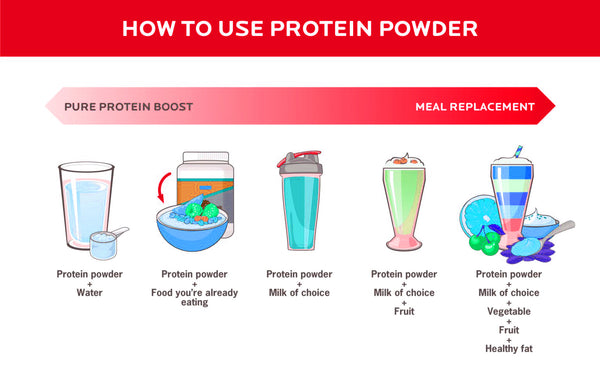
Consider how much flavor means to you.
Choose a protein powder that you are likely to consume on a regular basis. Enjoying how it tastes is one approach to assist ensure this. Of course, the best-tasting protein powder selection differs per person.
Factors to consider while choosing a protein powder:
Mixability and Texture:
Mesh count describes how fine a protein powder is, which might affect how quickly it mixes by hand in a shaker bottle. This information will not be visible on the label, but it may be discernible by looking at or touching the powder.
Plant-based protein powders have a grittier or chalkier texture, thus they usually taste better when combined with an electric blender (rather than a shaker cup). Blending with a creamier liquid, such as plant milk, or including higher-fat ingredients in your shake, such as yogurt and nut butters, can also help smooth out a gritty protein powder. (For ideas on how to improve the flavor of your protein powder, check out these tasty smoothie recipes.)
Powders that have been treated more thoroughly, such as isolates and hydrolysates, are more likely to have a smooth texture.
Flavor:
Some people are particularly sensitive to the taste of artificial flavors and non-nutritional sweeteners. If this describes you, look for a protein powder containing nutritive sweeteners and/or natural tastes.
Unflavored protein powder may also be a suitable option if you dislike artificial flavors or prefer the flavor of real foods. Unflavored protein powder can be used in many different ways, including:
- Blended in Super Shakes with other tasty ingredients.
- Made into muffins, cookies, and even granola bars.
- Stirred in oatmeal, pudding, soups, and pancake batter.
Many of these non-shake solutions are also compatible with flavored protein powders. (Try this recipe for homemade protein bars, which may be made with flavored or plain protein powder.)
As previously stated, you may need to try with several various flavors and brands before discovering the appropriate protein powder for you.
Before you commit to a huge box, attempt to obtain a sample pack of protein powder. Larger nutrition supplement firms typically offer them.
If the powder you want to try does not come in a single-serve bag, you may be able to obtain a sample from a local supplement store if you ask nicely.
Protein powder is not required for proper nourishment.
But it's a useful tool.
Precision Nutrition is all about choosing the proper tool for the job.
So, if you're having trouble meeting your protein targets, whether due to convenience or appetite, protein powder could be the solution.
It is worth noting that you may need to experiment before finding the correct one. Our advice: choose one and stick with it for two weeks, using the time period as an experiment.
Pay attentive to your feelings and take note of any changes. Do you feel more energetic than before? Are you having new, strange digestive issues? Do you feel less hungry in the hours following your workout? Consider how these adjustments may be moving you closer to—or away from—your goals.
If the modifications are positive, you might have discovered your winner. If not, try another flavor, brand, or protein kind.
Finally, choosing the finest protein powder for you requires asking the appropriate questions and testing with several possibilities.
And the advice? It's useful not only for selecting a protein powder, but for making almost any nutritional decision.



